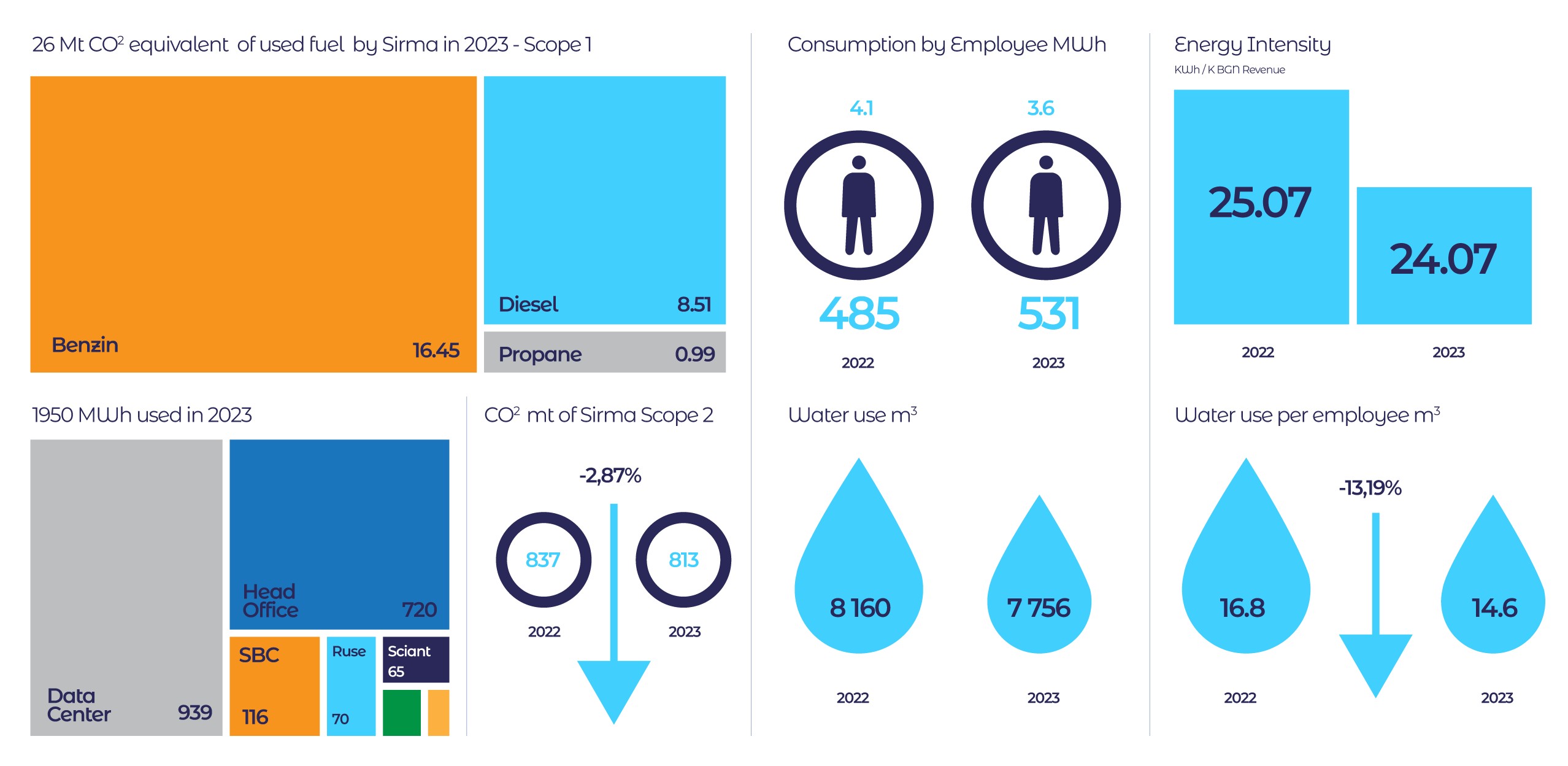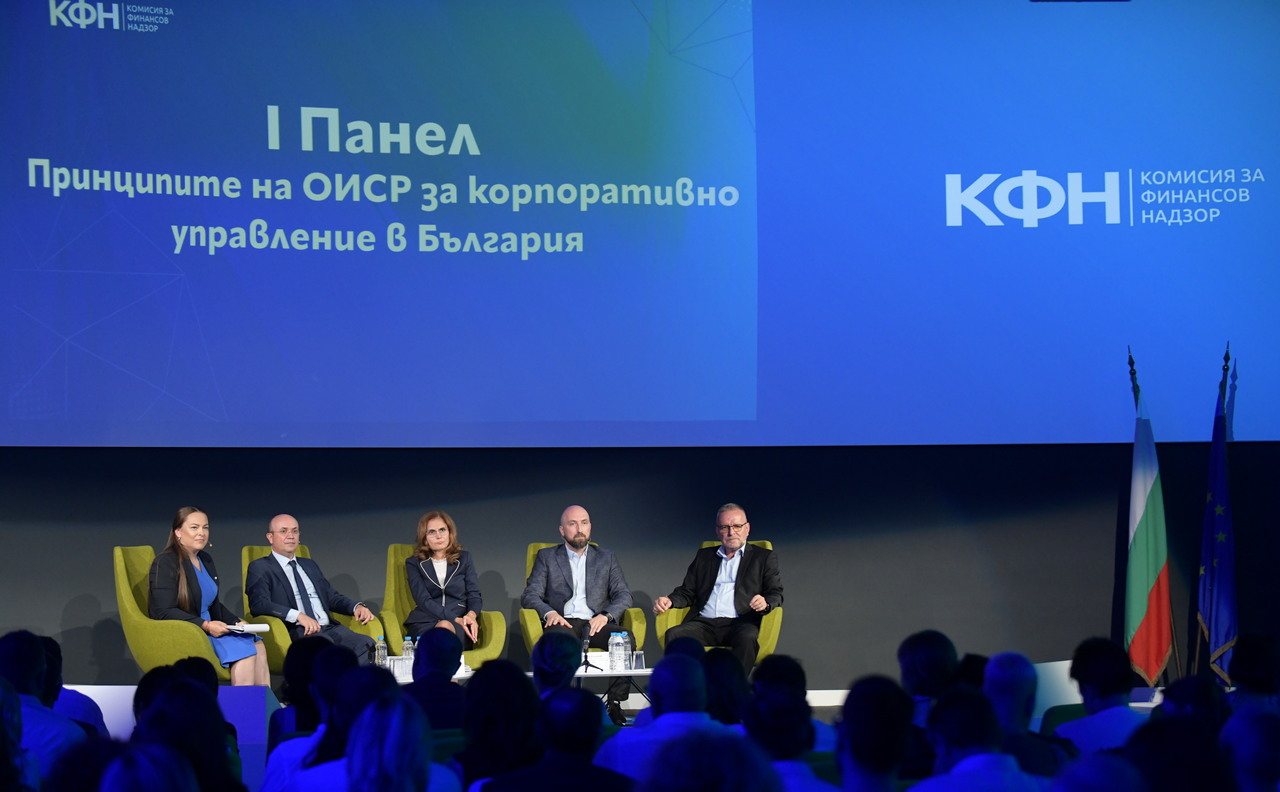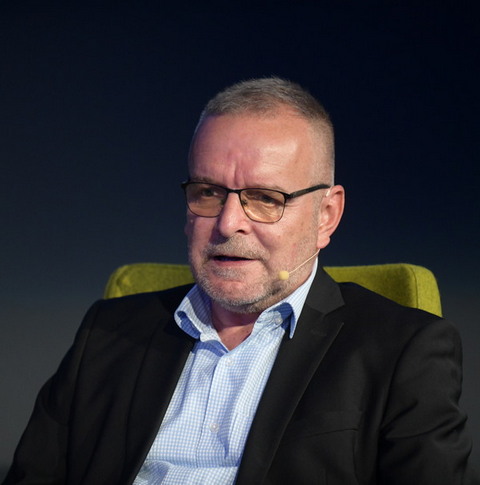On July 10, 2024, the Financial Supervision Committee (FSC) organised a conference about “Future challenges and expectations in the non-banking financial sector” at the Inter Expo Centre in Sofia. The event focused on the new revision of the OECD Principles of Corporate Governance and the upcoming implementation of the new MiCA and DORA regulations. The new version of the OECD Principles now includes Chapter VI on “Sustainability and Resilience” for companies.
Stanislav Tanushev, the Director of Investor Relations and Sustainability at Sirma Grup Holding, participated in the discussion regarding the revised Corporate Governance Principles. Other participants included Dr Manyu Moravenov, CEO of the Bulgarian Stock Exchange, Petya Khantova, Director of the Investment Supervision Directorate at the FSC, and Kosta Yordanov, CEO of BIANOR AD.
The Chairman of the Financial Supervision Committee, Boyko Atanasov, opened the conference by stating, “The OECD principles do not offer off-the-shelf solutions. They outline a framework and allow flexibility tailored to a company’s activities. Each company should study the principles and implement them in the way that best suits the company.”
Stanislav Tanushev shared some of the best practices at Sirma, that have made it a prime example of a successful organisation applying the OECD principles and achieving high levels of sustainability. He noted that there are numerous challenges involved in achieving sustainability and resilience. Mr Tanushev emphasised that while the OECD principles are merely a recommendation, the EU directives and regulations aimed at transparency in sustainability are mandatory. He provided the example of the Corporate Sustainability Reporting Directive (CSRD) to illustrate this point. Therefore, there are several challenges in deciding to comply with these principles.
“Sustainability involves managing risks and identifying opportunities. Any company, including Sirma that pursues sustainability transparency faces numerous challenges, including extensive regulations, lack of expertise, lack of organisational structure, and lack of software for managing sustainability data. Despite these challenges, there are also many opportunities related to sustainability.”
He gave an example with his company in finding new opportunities after working to reduce the risk of power supply bottlenecks - one of Sirma’s significant risks. “We have a data center that consumes a significant amount of power. Hence electricity is essential for us because Sirma stops working without it. This means that the electricity supply is very important to us. So we have installed a photovoltaic system at our headquarters to reduce the risk of electricity supply difficulties. This system will cover 30% of the electricity consumption within the building. This not only helps to reduce Sirma’s carbon footprint and limit the risk of a power outages but also results in real cost savings that are easily calculated.”
Sirma is committed to the updated version of the OECD Principles. In addition, the Group is undertaking intensive preparation to meet the requirements of the transposition of the CSRD into Bulgarian law. Some of the results of the information gathered are now available. Sirma is now analysing its carbon footprint under so-called Scope 1 and 2. In 2024, Sirma has published its Non-Financial Declaration for the second time, where some of these results are also included:

- Scope 1: The Group companies consume 26 Mt CO2 equivalent. Here, the carbon footprint is relatively limited because Sirma strives to limit the number of company cars. The picture is much more interesting under Scope 2. The double materiality analysis identified electricity as essential for Sirma. Under Scope 2, Sirma consumed 1,950 MWh of electricity and heat in 2023, which equates to 813 Mt CO2 equivalent for the Sirma Group in 2023.
- At the same time, the availability of 2022 data under Scope 2 allows Sirma to make its first comparisons on the dynamics in energy used: Sirma has reduced Scope 2 energy use by 2.87% in just one year. Moreover, the last months of 2023 were also the first months of operation of Sirma’s new PV system. It is designed to provide 1/3 of the energy required by the Group’s headquarters. Accordingly, the renewable energy (included in the above total) has reduced Sirma’s carbon footprint by 12 Mt.
- Despite the increased number of employees, the group managed to reduce its energy use in 2023. Accordingly, the annual energy consumption per employee dropped from 4.1 MWh to 3.6 MWh.
- In addition to the data on energy used in Sirma, the Group also published the dynamics of water used during the year for the first time. The amount of water used fell by 4.95% to 7,756 M3.
- With an increasing number of employees and a decrease in water consumption, water consumption per employee dropped as well, by as much as 13%.
This year, Sirma is developing its plan for sustainable development by 2050 with the ultimate goal of achieving carbon neutrality.
Photo credits ©FSC




